How To Ski Steeps

Votes:
So, you can ski well on the groomed slopes and are happy to ski fast. However, when you venture into steeper terrain, the composed ski position you’ve worked on falls apart. A friend even takes a few pictures of you skiing the black bump run at Whistler and you feel great, but then look at the images and think ”what are my hands doing all over the place? I don’t look nearly as good as when I’m skiing on piste!”
Keeping your form in the steeps and off piste can be hard, but here are two tips to help you stay with your skis and impress the chairlifts of people watching as you rip up the steep Hollywood-style run.
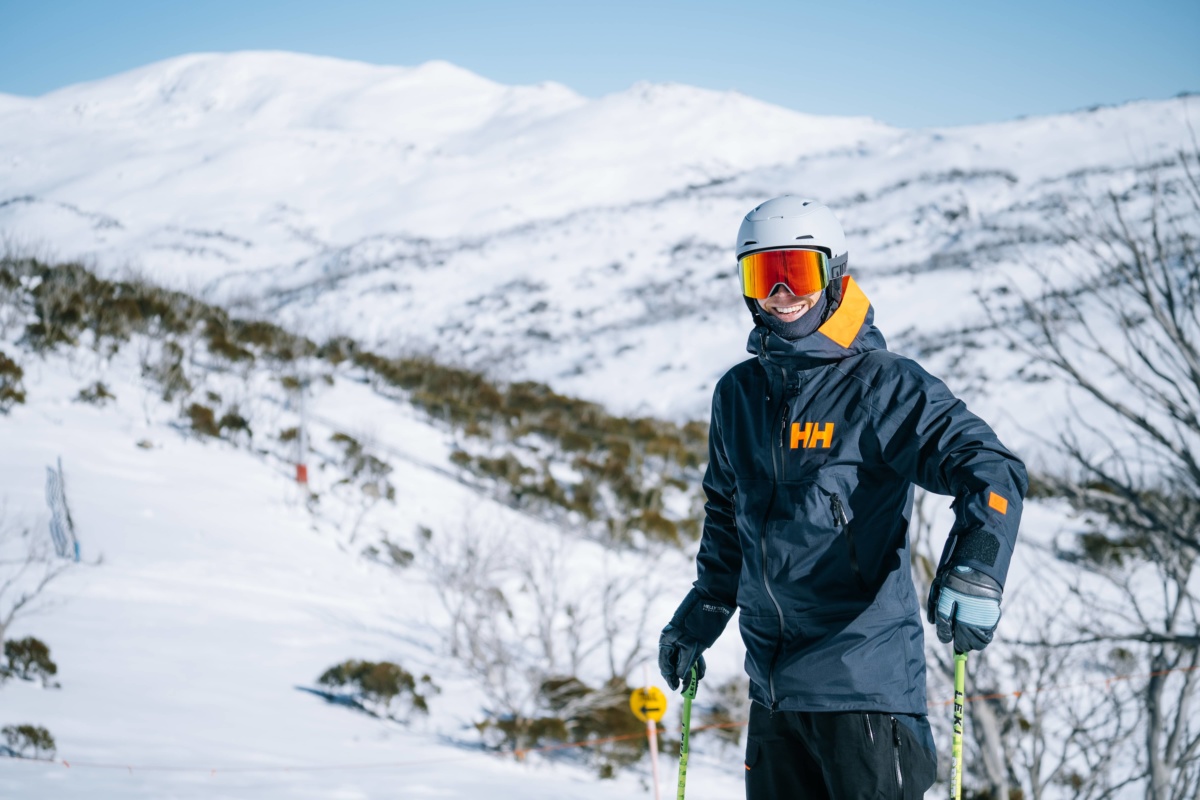
Tom Gellie in Perisher, Australia
1. Your arms are part of your core
Yes, this is a ski tip that starts off with talking about arms and not your feet! Neither balance over the outside ski, more angulation nor a strong core. It’s about how important your hands and arms are for balance.
Often the first sign of someone losing control is shown in their arms. It doesn’t matter if it’s skiing or just walking, when you lose balance your arms fly out to try and catch you. So rather than just keeping your hands in front and keeping them quiet, be PROACTIVE with them.
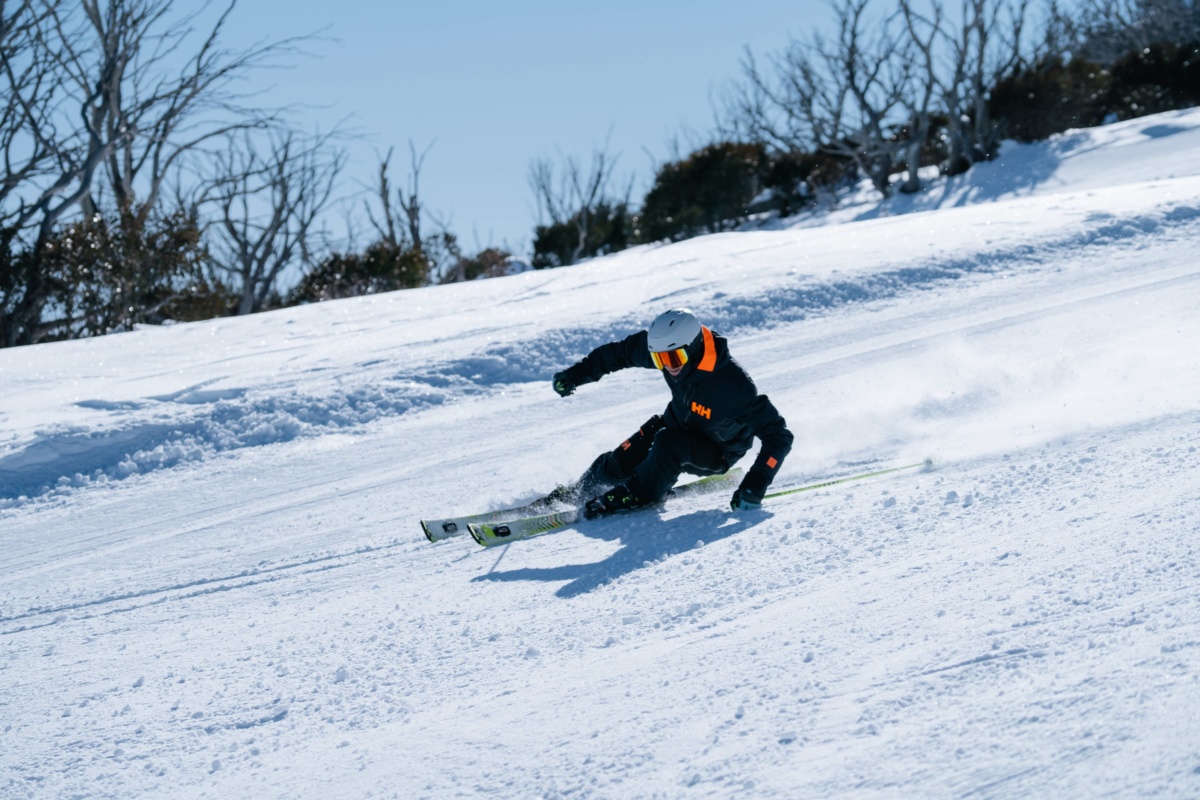
Use your hands and arms to your advantage
I’m going to use the term “bring them home” to describe what I do with my hands when I ski tough terrain. Home is my base or my skis, and specifically my feet. So when I warm up, I practice always feeling like my hands and arms are keeping slight tension, which helps pull me back to home. You could also describe this tip as an exercise in awareness of hand positioning. So rather than just keeping your hands still, try and imagine your hands are magnetized to your feet, as this helps keep you grounded and steady.
"So rather than just keeping your hands still, try and imagine your hands are magnetized to your feet, as this helps keep you grounded and steady."
A quick bit of anatomy. Your latissimus dorsi muscles (or lats) are very strong and link your arms to your lower back and pelvis. Creating a connection between the arms and the core through these muscles and your pecs at the front gives you much quicker response times when you lose your balance. Don’t neglect this important connection.
The sensation is not one of being stiff in the arms, but like you have an elasticity that helps the arms always recoil back into your body to help you stay composed.
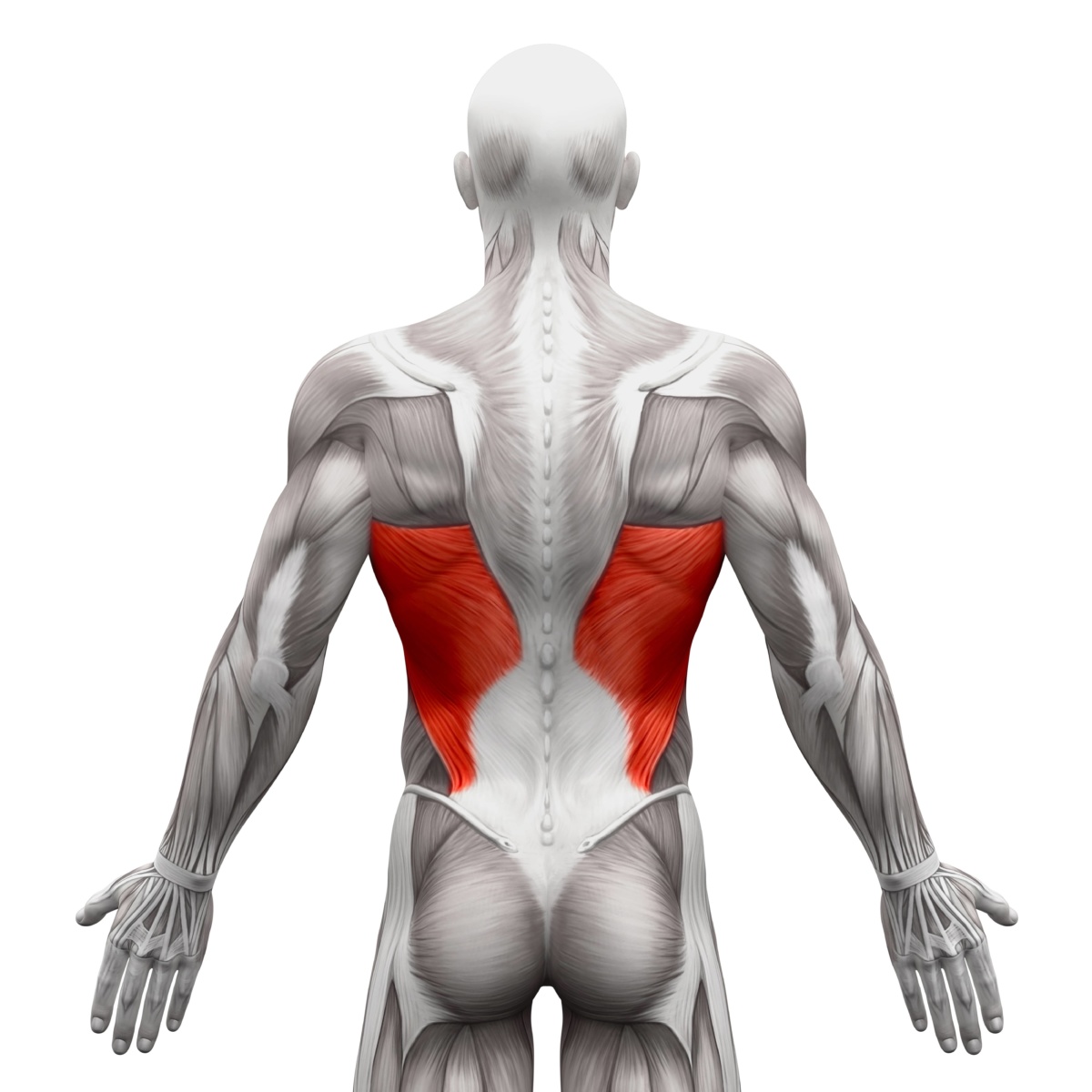
Latissimus dorsi muscles
When I’m skiing steeps, this focus on the arms really makes me feel athletic and cat-like, because great skiing is dynamic and shows moments of losing control and balance. This is exciting skiing and it feels great! People on the slopes will spot this and small mistakes will be ignored as the overall picture is that of you constantly regaining control.
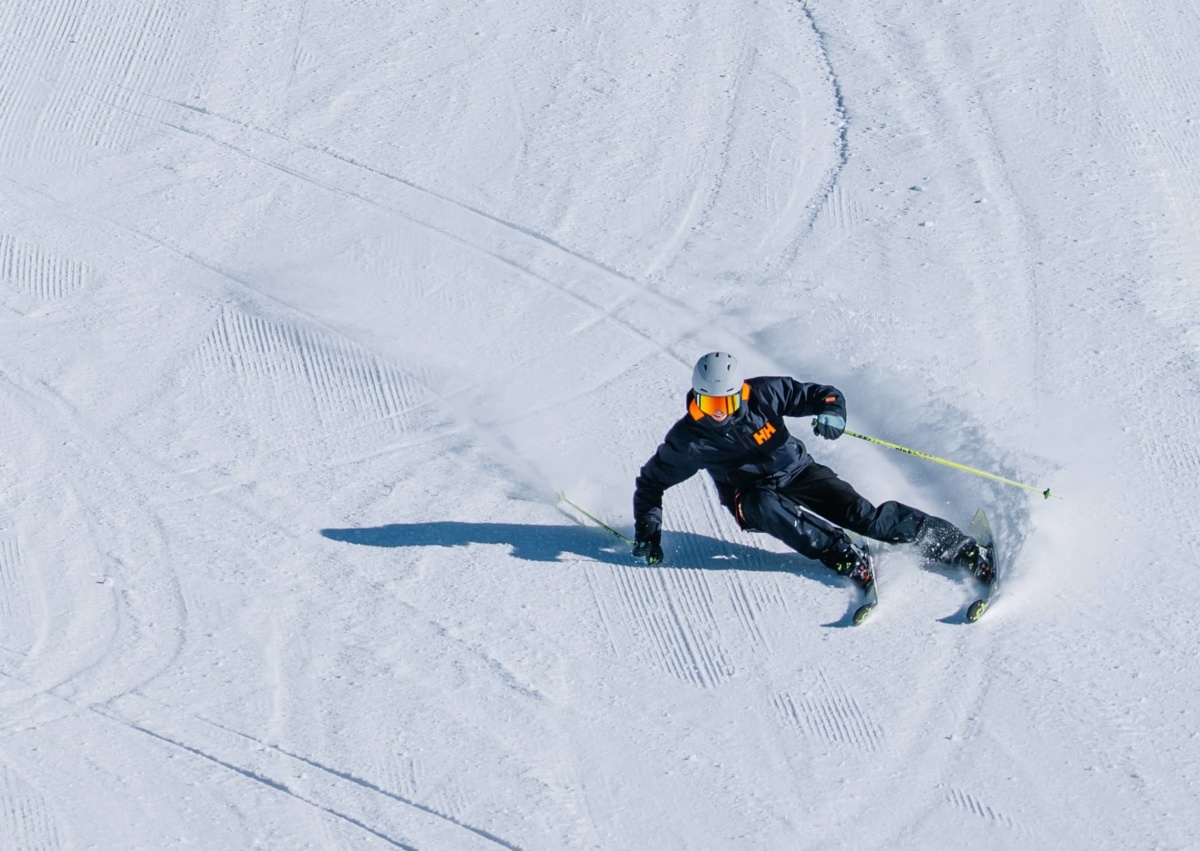
Dynamic turning is crucial on steeps
2. Know the balance point of your skis
Skis are designed to grip best when your body is balanced in the centre. Neither forward nor back, but the centre. Your skis conversely will pivot quicker when you are standing more forward of the balance point. So, forward of the balance point helps with quicker steering; but dead-centre stops the steering effect and makes the ski hold and edge. It’s this trade-off of steering vs. solid edge grip that needs your focus in the steeps in order to keep your form.
When you finish a turn in the steeps, you want those skis to grip and hold, and this is where I see people make the mistake. They don’t adjust the balance point for better edging and therefore get less grip. The sensation of skis sliding away from you is what will cause you to lose form.
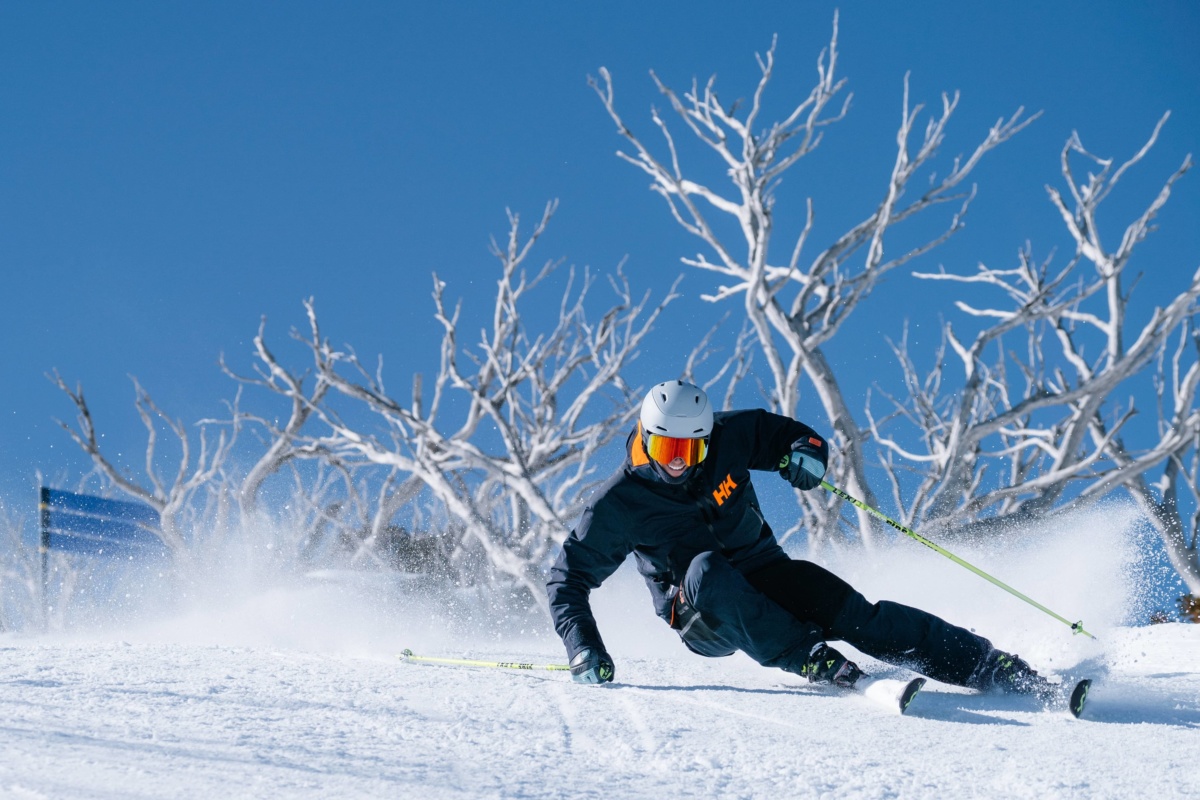
Adjust your balance point for better edging
If you’ve executed a solid turn completion, then you will feel comfortable starting a turn more forward to help the steering phase; and easier guiding of the skis into a shorter turn. But then quickly comes the change in balance you need to actively pursue to once again shift back to the centre to help create grip and stability.
Nearly always the tails skid away because you are not balanced in the centre of the ski. Especially being too far forward you create torque, which makes the ski want to continue twisting and stops all efforts at gripping the snow well.
So before entering the steeps, practice feeling your skis and adjusting your balance fore and aft, so you know where to stand to make the ski grip and where to stand to help free the tails for easier steering.
Keeping focused on small fore-aft movement shifts can make a big difference in your skiing
Carv's audio-guided coaching is a great way to hone in on this. Getting higher numbers in your earphones on the Fore:aft ratio Monitor will tell you your balance is forward, so practice being able to control how much you do this. Can I make this turn give a score of 75? And then the next five be closer to 60? Then work on turns where you get scores of 50, which will tell you you’re standing centered and the skis should feel a lot grippier. Use the digital coach to help fine tune your fore and aft balance so at any moment you can switch gears.
Ski steeps confidently with Carv
The Carv app has many features to designed to improve your balance and edging, allowing you to ski steeps assuredly. These drills have been created with Olympic racer Kaylin Richardson, and PSIA elite coach and demo-team skier Eric Lipton. Carv's interactive skiing Modes will take your skiing to the next level with turn-by-turn audio feedback, to help you get the most from your time on the slope.
- Develop your balance with Balance Training, and move through 20 grades of increasing difficulty.
- Use the Fore:aft ratio Monitor to pinpoint your weight distribution.
- Tear it up in Free ski Mode for audio feedback at the end of your runs.

If I was to summarize the two points from this article, this is how I’d describe it:
Work on awareness of your hands and how you can direct tension down through the torso and into the feet. Even practicing balancing on one foot now, you will feel how this focus helps your body feel more stable.
You can now use the hands and arms to direct pressure into different places under your feet, which will change the balance point on your skis. Shift slightly forward to help steer a shorter turn and then centered to help the skis stop pivoting and allow them to grip.
Taking these two tips and combining them will ultimately give you much greater control and drastically change how your form looks coming down the steeps. You may even get that Instagram pic your friends back at work are all jealous of!
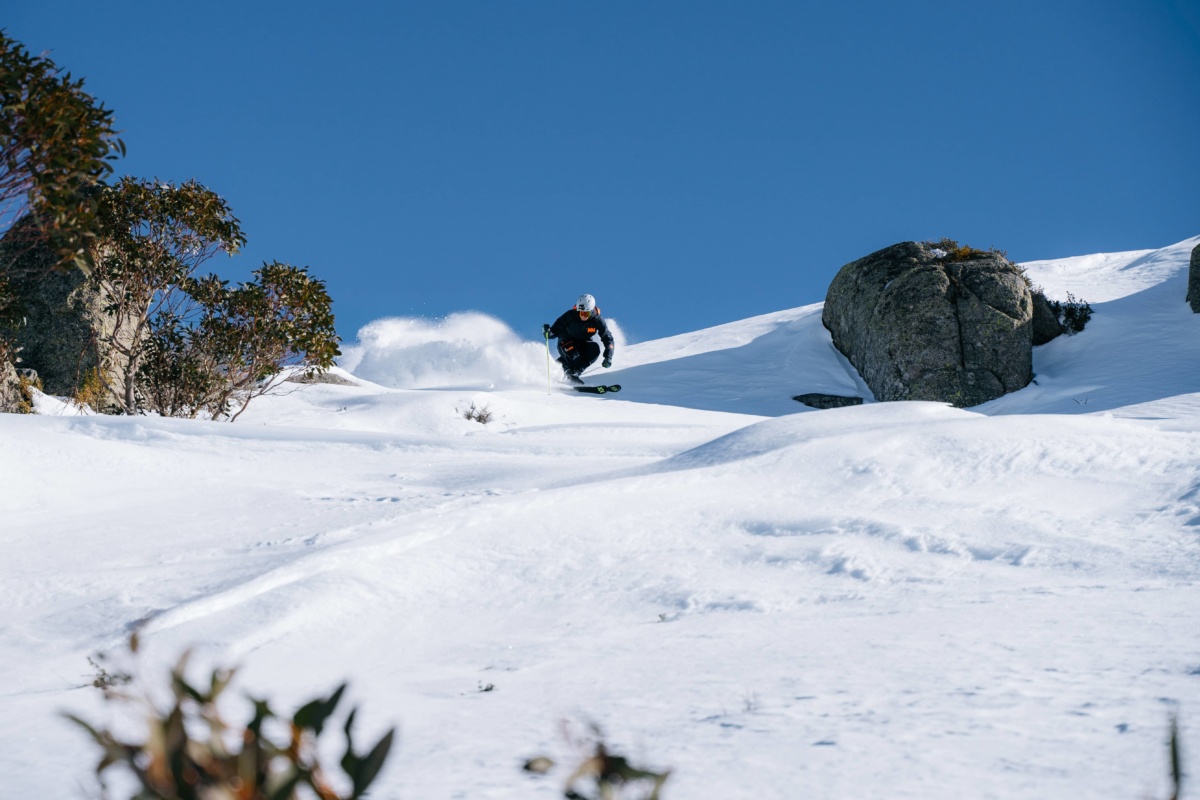
Now go hit those steeps!
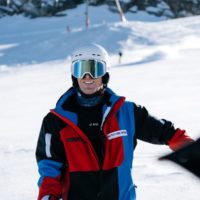
Written by: Tom Gellie
APSI Level 4
Tom is an industry-leading ski coach and instructor. He operates an online coaching platform called Big Picture Skiing, which helps people understand their skiing and improve their mobility.
To find out more, head to www.bigpictureskiing.com.


